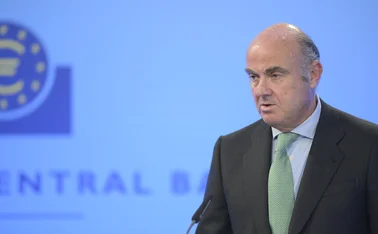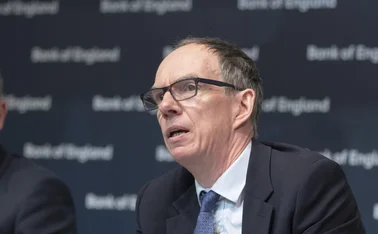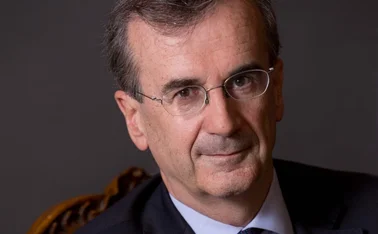
Central bankers face tough monetary policy dilemmas
Monetary policy dilemmas

Central bankers across the globe are grappling with questions about the correct approaches to monetary policy in a post-financial crisis world. A number of large central banks have adopted forward guidance as a new tool aimed at better communicating their intentions – so having a policy impact without actually changing policy. However, as a critique of the Bank of England’s newly adopted forward guidance policy by Richard Barwell and Jagjit Chadha on pages 49–57 demonstrates, there is still much debate about how such policies should be adopted.
There is also substantial debate about the use of monetary policy to ‘lean’ against the build-up of credit and asset bubbles. Many commentators believe the Federal Reserve under former chairman Alan Greenspan was wrong not to use monetary policy to try to prevent the formation of property and credit bubbles in the US in the 2000s, which ultimately sparked the global financial crisis. But Swedish economist and former deputy governor of the Sveriges Riksbank, Lars Svensson, takes a different view. He argues, on pages 27–36, that leaning is not necessarily a logical option – at least in the case of Sweden.
Svensson’s conclusions, demonstrated by building in a household debt ratio mandate into the Riksbank’s monetary policy framework, make for compelling reading: ‘leaning’, he argues, is not only futile, but can have perverse effects. He adds that if there are concerns about the formation of dangerous bubbles in an economy, macro-prudential tools are the best mechanisms to tackle them.
The majority of Svensson’s former colleagues on the Riksbank’s monetary policy committee, however, favour the continued use of interest rates to try to restrain the Swedish property market boom. They understand the logic of Svensson’s argument, but choose to follow a policy at variance with its practice. This could reflect a newfound wariness on the part of some central bankers – a view William White, interviewed on pages 15–26, would doubtless sympathise with. White likes to quote Mark Twain: ‘It ain’t what you don’t know that gets you into trouble. It’s what you know for sure that just ain’t so’.
Nonetheless, there is a strong case for evidence-based research, as well as sound economic reasoning. The Gulf Co-operation Council (GCC) states: Bahrain, Kuwait, Qatar, Oman, Saudi Arabia and the United Arab Emirates, may serve to illustrate the dilemmas involved. Demand for hydrocarbons from Asia and other emerging markets, as well as a drive by the US towards energy independence, have reduced the high correlations witnessed between US economic performance and the price of oil in recent years – yet all the GCC states, save Kuwait, continue to peg their currencies to the US dollar. The result is the economic performance of GCC countries, which are still heavily dependent on hydrocarbon revenues for growth, is out of sync with that of the US economy. The ‘impossible trinity’ holds that, absent capital controls, it is impossible to have an independent monetary policy and a currency peg at the same time. So, oil-rich states are importing ultra-loose monetary policies from the US, which some argue is not appropriate for their economies at a time of robust domestic growth. Khalid Al Khater, director of the department of research and monetary policy at the Qatar Central Bank, described the US dollar pegs as “destabilising” to the GCC nations at a Central Banking event in Abu Dhabi in October. He believes a shift to a trade-weighted basket, such as that deployed by Singapore, would help GCC countries to tackle domestic inflation. Nevertheless, whatever the merits of this approach in theory, GCC states are likely to continue with their US dollar pegs. Central bankers will no doubt cite ‘stability’ as the rationale for the policy, as well as a desire to remain close to the US.
It is a familiar story in Hong Kong, which celebrated 30 years of pegging its currency to the US dollar in October this year. The Hong Kong economy has increasingly moved out of sync with the US and faced significant inflationary pressures and soaring asset values in recent years. Joseph Yam, former head of the Hong Kong Monetary Authority, courageously raised the prospect of switching Hong Kong’s exchange rate to a basket of currencies, including the renminbi, in June last year. But Yam, who defended the Hong Kong dollar’s peg during the Asian financial crisis, was slammed by politicians despite the logic of his argument.
Singapore as a role-model
Meanwhile, Singapore’s exchange-rate centred monetary policy approach may be envied by some, but it comes with its own set of challenges. The policy of managing the Singapore dollar against a trade-weighted average value of the currency relative to all major currencies, first adopted in the 1980s, has proven successful in terms of securing price stability against a backdrop of rapid economic growth and an open capital account – Singapore’s consumer price index (CPI) stood on average at 1.3% per year during 1985–2005, one of the lowest rates in the world. But the benefits of its approach have become less evident in recent years, with Singapore’s CPI surging to 4.2% per annum from 2010–12, even as economic growth slowed due to weak external demand and a tight domestic labour market. Singapore continues to struggle to contain low interest rates imported from developed nations. It has relied on macro-prudential tools to tackle spiralling car and home prices, consistent with a tighter monetary policy, which has brought down headline and core inflation.
As Monetary Authority of Singapore managing director Ravi Menon acknowledged in a speech, Securing Price Stability as Singapore Restructures, earlier this year, changes in the Singapore economy have blunted the effectiveness of monetary policy. But he defended the underlying relationship between the exchange rate and inflation, and between the exchange rate and aggregate demand. He also stated the use of interest rate or inflation targeting as an alternative would not have served Singapore any better in containing inflation during the past three years. His detailed defence of Singapore’s model concluded that the exchange-rate policy remains sound, but its transmission mechanism to the economy is weaker, so requiring macro-prudential tools to ensure effective policy.
It may be an appropriate time for central banks around the world to follow the example of the MAS in conducting reviews of their monetary policy options. Debates about the value of forward guidance, challenges raised by periodic asset price bubbles, dealing with surges in capital and liquidity flows, safeguarding domestic economies from imported instability, reliance on evidence-based policy and the orientation of monetary policies in many emerging countries towards the US dollar – these are all topics that will not go away any time soon. Indeed, the longer the era of ultra-loose monetary policies continues in the ‘centre’ economies, the more other nations will need to navigate in uncharted economic territory.
Only users who have a paid subscription or are part of a corporate subscription are able to print or copy content.
To access these options, along with all other subscription benefits, please contact info@centralbanking.com or view our subscription options here: http://subscriptions.centralbanking.com/subscribe
You are currently unable to print this content. Please contact info@centralbanking.com to find out more.
You are currently unable to copy this content. Please contact info@centralbanking.com to find out more.
Copyright Infopro Digital Limited. All rights reserved.
You may share this content using our article tools. Printing this content is for the sole use of the Authorised User (named subscriber), as outlined in our terms and conditions - https://www.infopro-insight.com/terms-conditions/insight-subscriptions/
If you would like to purchase additional rights please email info@centralbanking.com
Copyright Infopro Digital Limited. All rights reserved.
You may share this content using our article tools. Copying this content is for the sole use of the Authorised User (named subscriber), as outlined in our terms and conditions - https://www.infopro-insight.com/terms-conditions/insight-subscriptions/
If you would like to purchase additional rights please email info@centralbanking.com
Most read
- Supervisors grapple with the smaller bank dilemma
- ECB says iPhone is currently incompatible with digital euro
- Central bank of the year: Central Bank of Brazil








